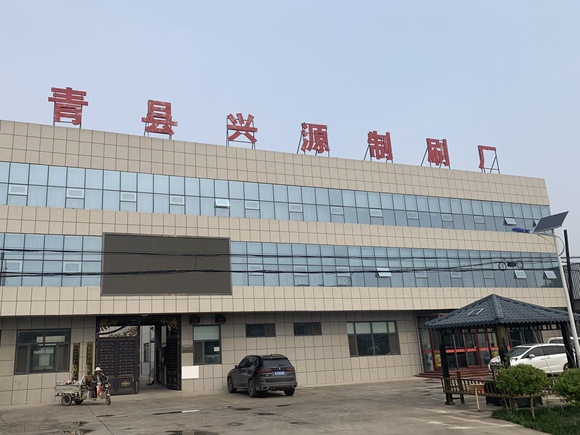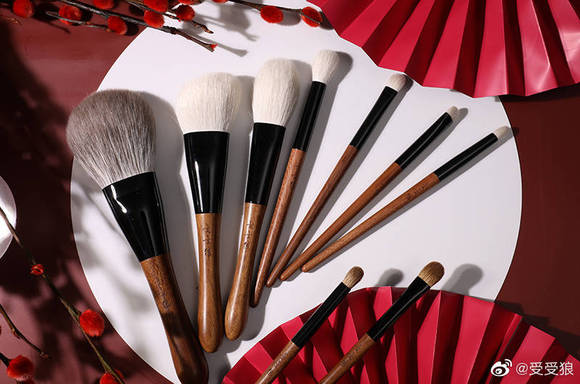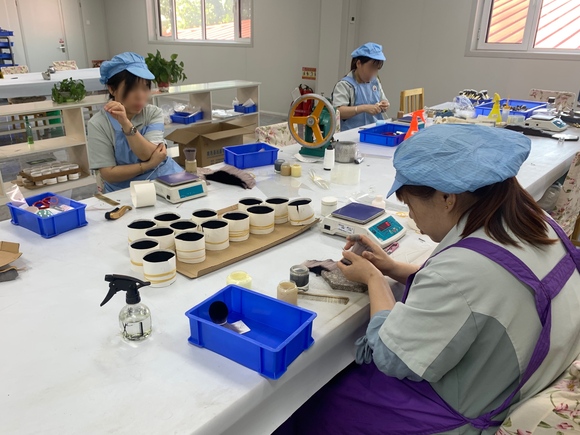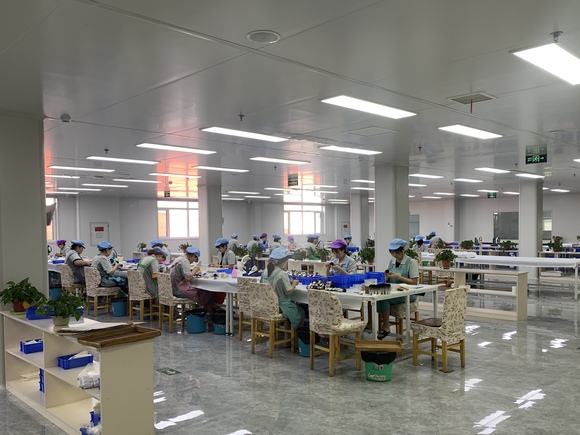Already China’s make-up brush capital, a small town in North China aspires to make the best brushes in the world.

The Energy make-up brushes. Photo provided to Jiemian News by Energy
By ZHANG Xinyu
Xingyuan Makeup Brush Factory occupies a nondescript three-story building in Cangzhou, Hebei, a rural town about 200 kilometers outside Beijing.
On an ordinary day, 160 workers sit in rows, their hands dexterously switching between various tools. One end of a carefully weighed bundle of hair is fit into a cylinder-shaped wooden mode, which is then lightly tapped and gently rotated to achieve the desired shape and fluffiness.
An experienced worker knows by heart the technique for different brush types and hair materials. Some need only a few taps, some tens or even hundreds. The hair is then trimmed, tied, and attached to a ferrule and later a handle. Some of the finished brushes are branded with the logos of major fashion houses — Chanel is a big client — some with the factory’s own label called Energy, now one of the most popular domestic brands.

Xingyuan has been making brushes since 2006, up to 30 thousand a day in three thousand shapes and sizes. Make-up is a big business in Cangzhou with 140 factories employing 16 thousand people making brushes alone. These factories sold brushes worth 1.5 billion yuan (US$230 million) last year, about 15 percent of which came from exports. But it’s not just the volume, it’s quality that counts.
First factories in town were opened by Koreans in the 90s and were contracted to international brands from the outset. China and South Korea had just reestablished diplomatic relations and Korean businesses quickly moved in, forming industry clusters in China’s northern cities, Cangzhou was one of them.
KANG Shaoxing, the owner of the Xingyuan factory, worked at another brush factory before striking out on his own. He started as an electrician, then learned foil stamping, and eventually became president of the factory union.
Founded in 2006, like most Cangzhou factories, Xingyuan started with contract manufacturing for foreign brands. It was easy money and his outfit quickly grew from six to sixty. Then, in the 2008 financial crisis, the Korean won, in which Xingyuan was paid, lost half its value. A million yuan hit prompted him to look closer to home where he met WEI Ran.
Wei began buying excess inventory from Cangzhou factories in 2012. Most brands ordered around 5 percent more than they shipped. She sold the brushes on Taobao. When she became popular enough to justify her own line, she reached out to Xingyuan. She now has her own factory. With Wei’s help, Kang started Energy in 2014.

ZHU Aiqin got a job in a Korean makeup brush factory in 1995 and was paid less than a dollar a day. She was trained for every task in the process. These proved valuable skills when she started her own brush brand, Qin Zhi (Made by Qin).
Zhu started running her factory in 2003. Almost a decade later, she gave up contract manufacturing when her Taobao store began to take large orders from domestic buyers. Qinzhi was born soon after.
Few realize that makeup brushes are made by hand. Since Japanese brand Hakuhodo came up with the “tapping” technique in 1981, barely any automation has taken place. Some high-end Cangzhou brands do not even make mass-market products.
“Substandard practices can easily become bad habits and a rush-everything attitude, which is ok for mass-market brushes, but hard to revert back when the workers are making the best ones,” Zhu said. In her factory, eleven layers of paint are applied to the brush handle. For contract manufacturers, the standard number of layers is seven.
The secret to the best brushes lies in bristles. Even goat hair, the most highly valued material, has eight different grades. Brushes made by the highest-grade goat hair are blissfully soft and work beautifully with powders and pigments. Hair from foxes and squirrels has superior touches but does not apply as well. Synthetic fiber also has its own advantages. It’s smell-free, easy to clean, and does not cause allergies. Zhu said the choice of material depends on the use. She herself can tell the material simply by looking.
Bristle shapes also matter. All the leading brands interviewed by Jiemian News work with influential makeup artists and cosmetics reviewers, partly for publicity, but more importantly to get feedback on designs. Four years ago, an influencer told Zhu to twist a cylindrical handle, which led to one of Qinzhi's best-selling products.

Almost as one, Cangzhou’s brush makers dream of becoming the next Hakuhodo. Design and function are only part of the journey, although many reviewers claim that some Cangzhou brands have already achieved Hakuhodo quality. The harder job, however, is to convince buyers to pay Hakuhodo prices. Qinzhi brushes, the most expensive Cangzhou brand, rarely cost more than 100 yuan. Her most expensive line costs 1800 yuan and was bought only once last month, by a brush collector. Hakuhodo still rules the high-end.
The biggest challenge is labor. Every brush has to be handmade, but it takes years to train a skilled worker. Most workers are in their forties, and monotonous work at the assembly line barely holds any appeal for young people.
